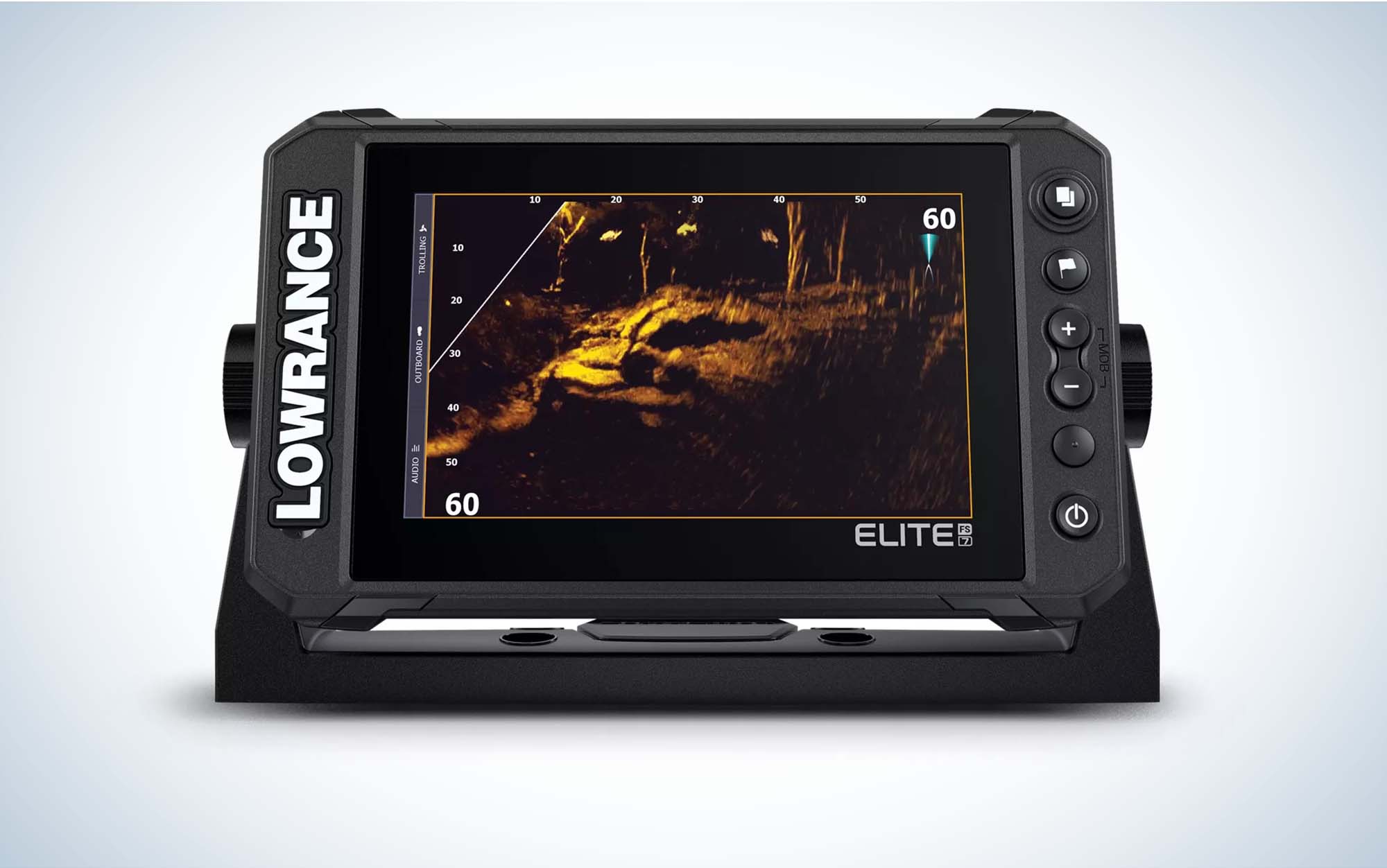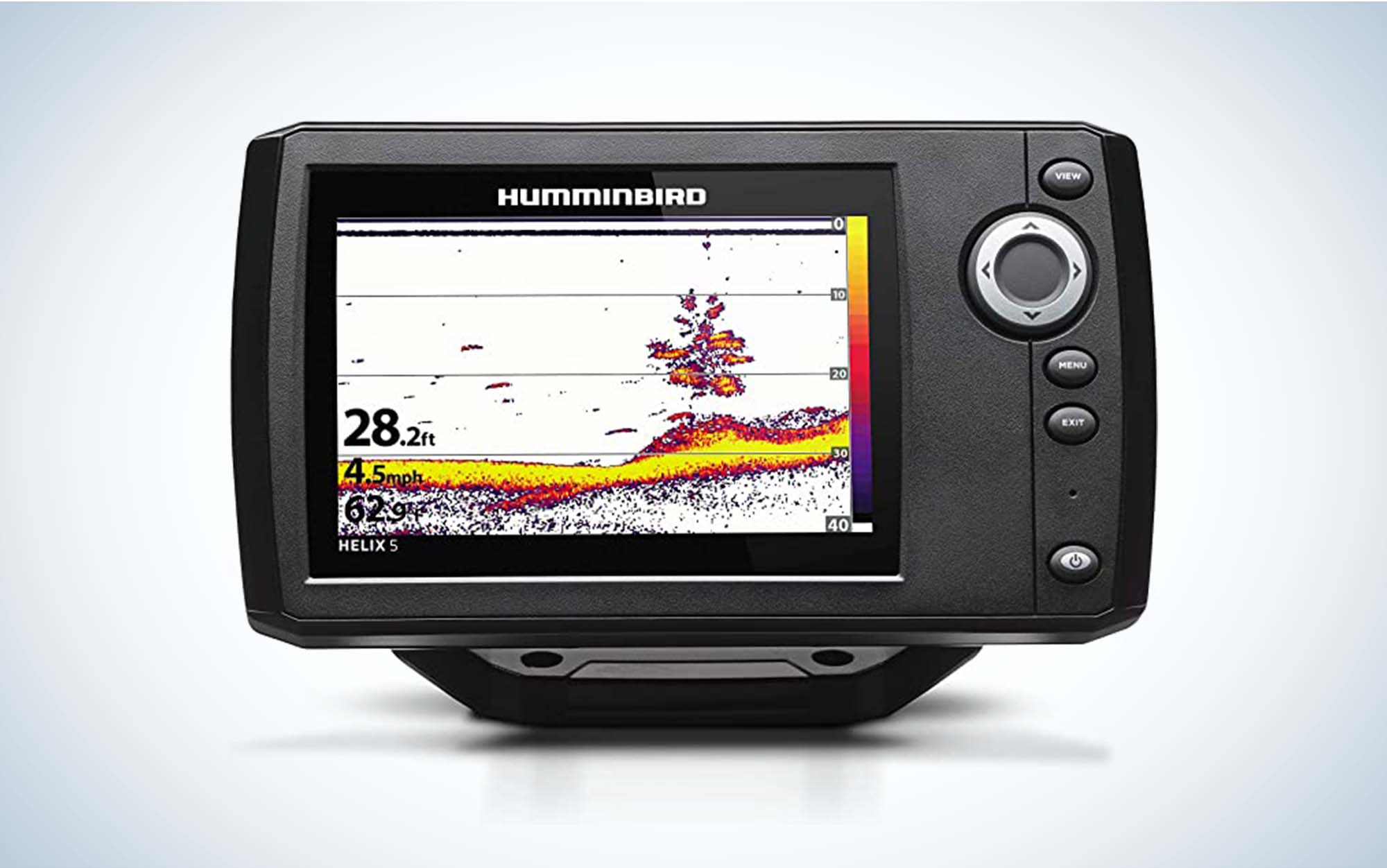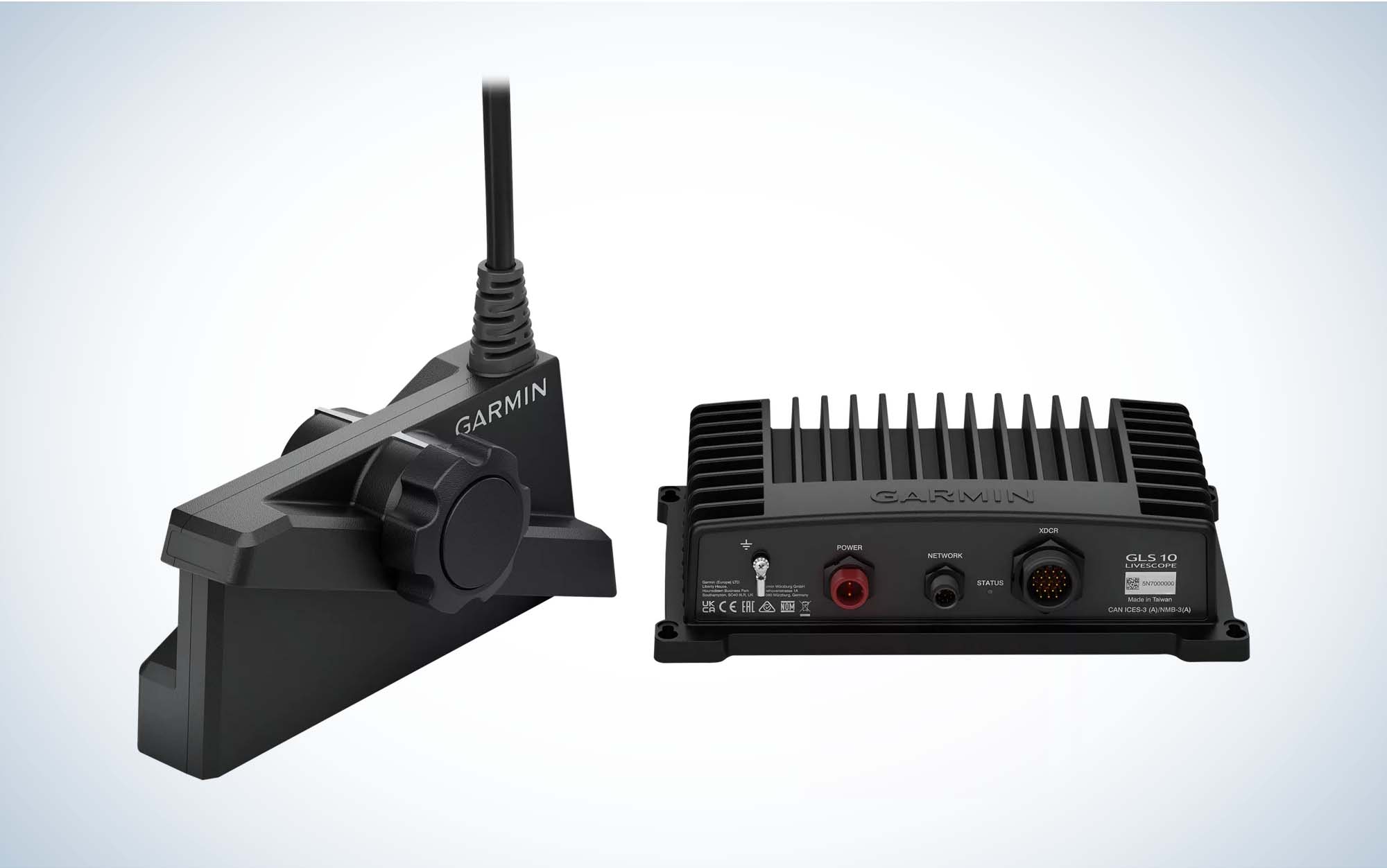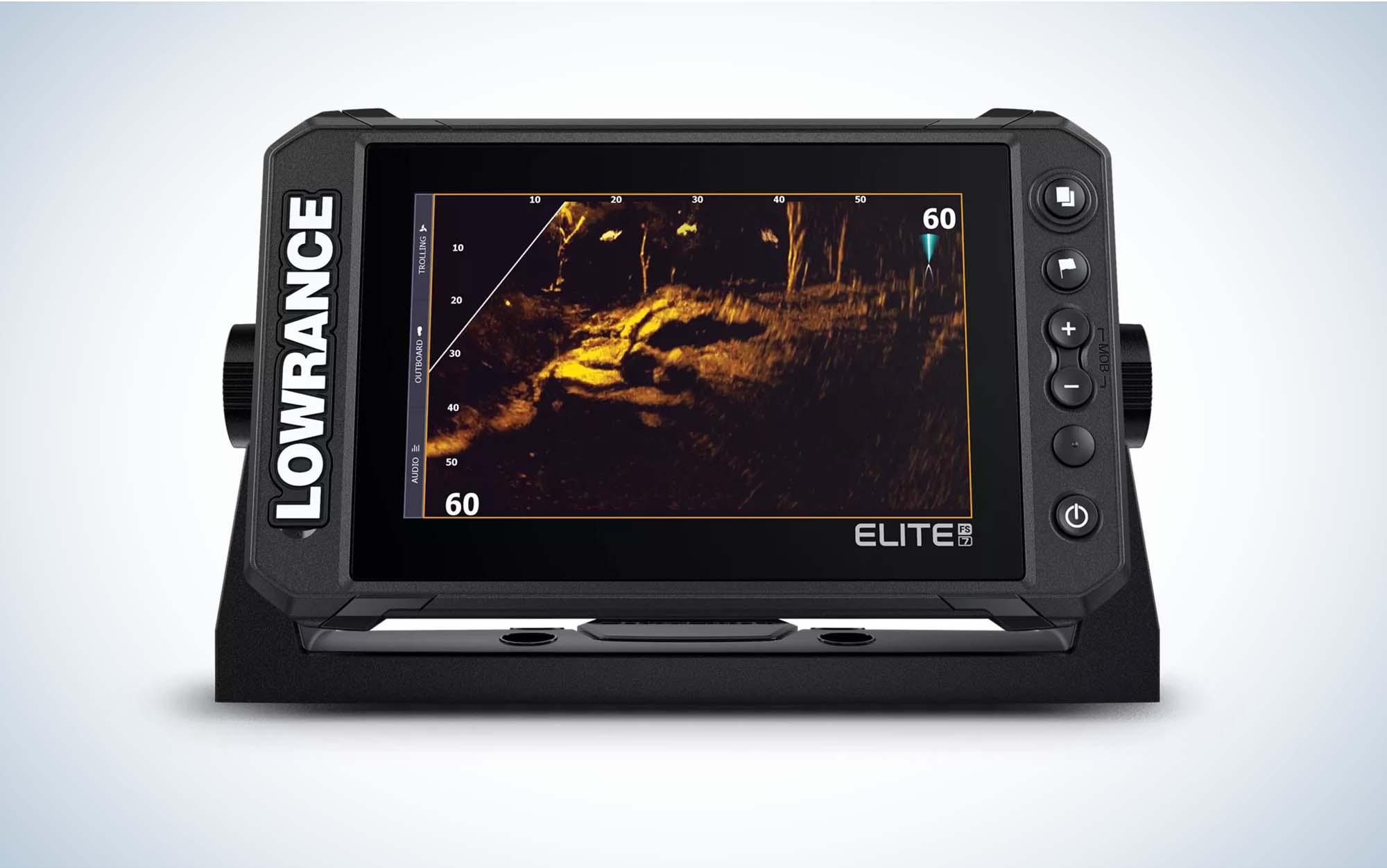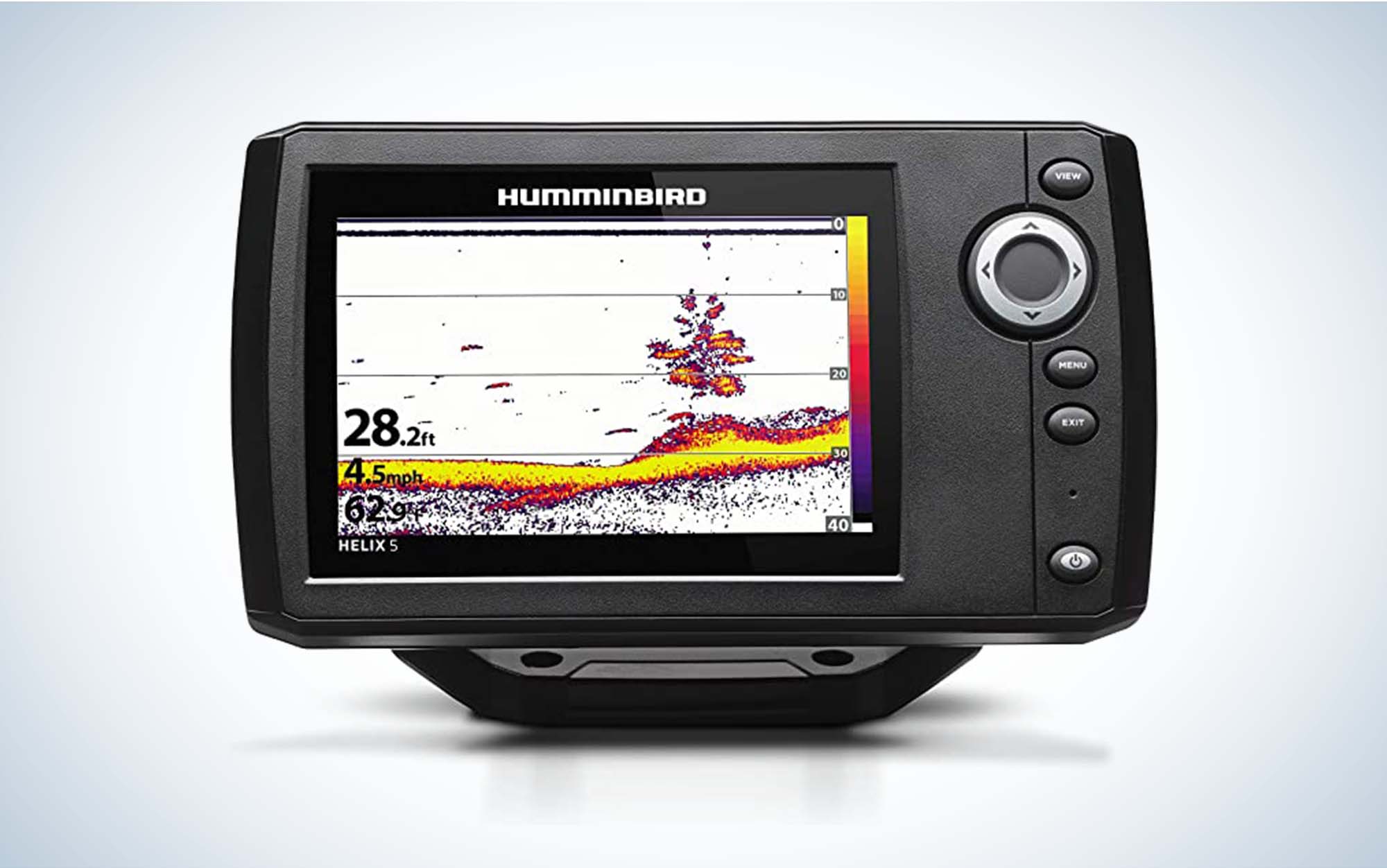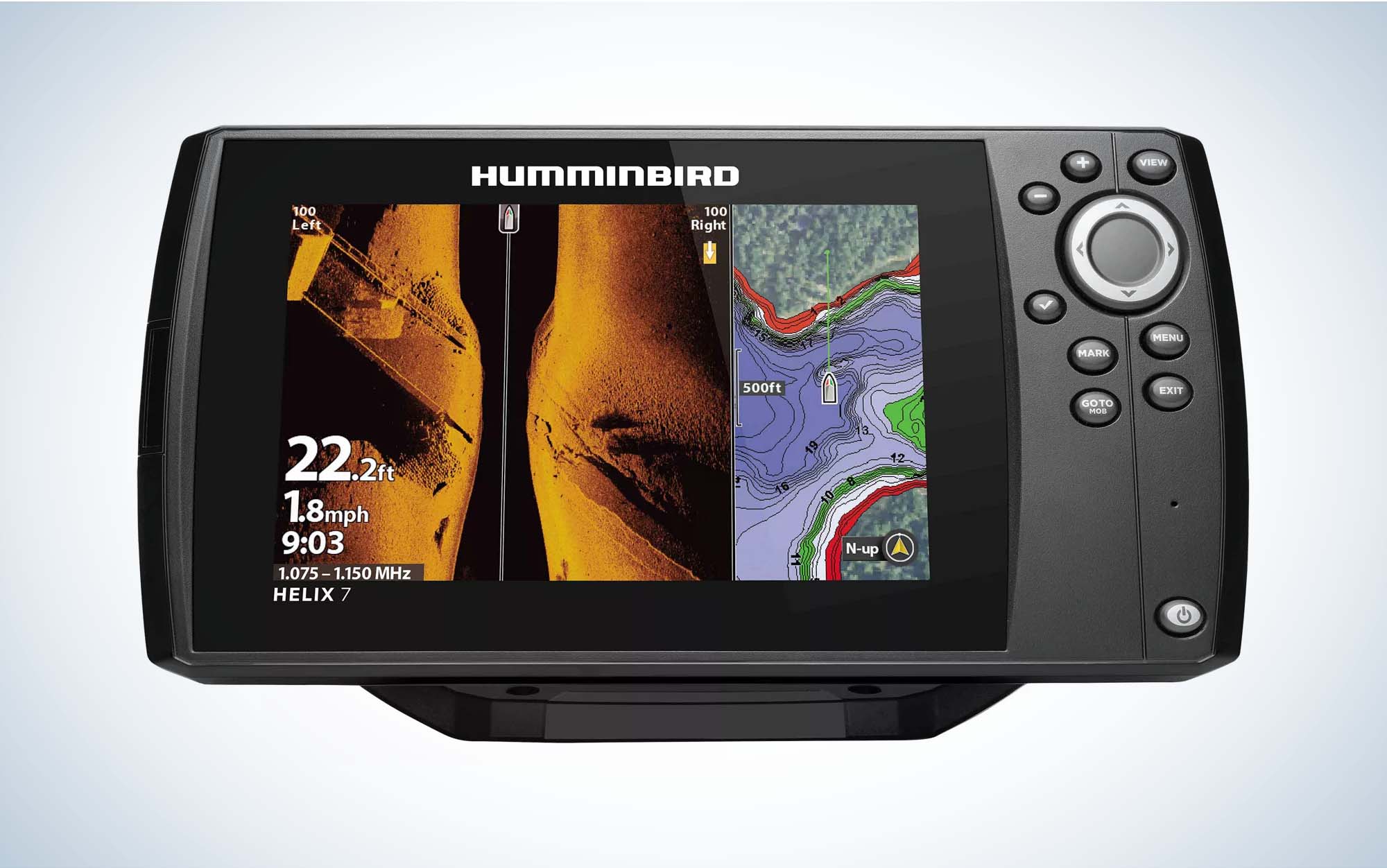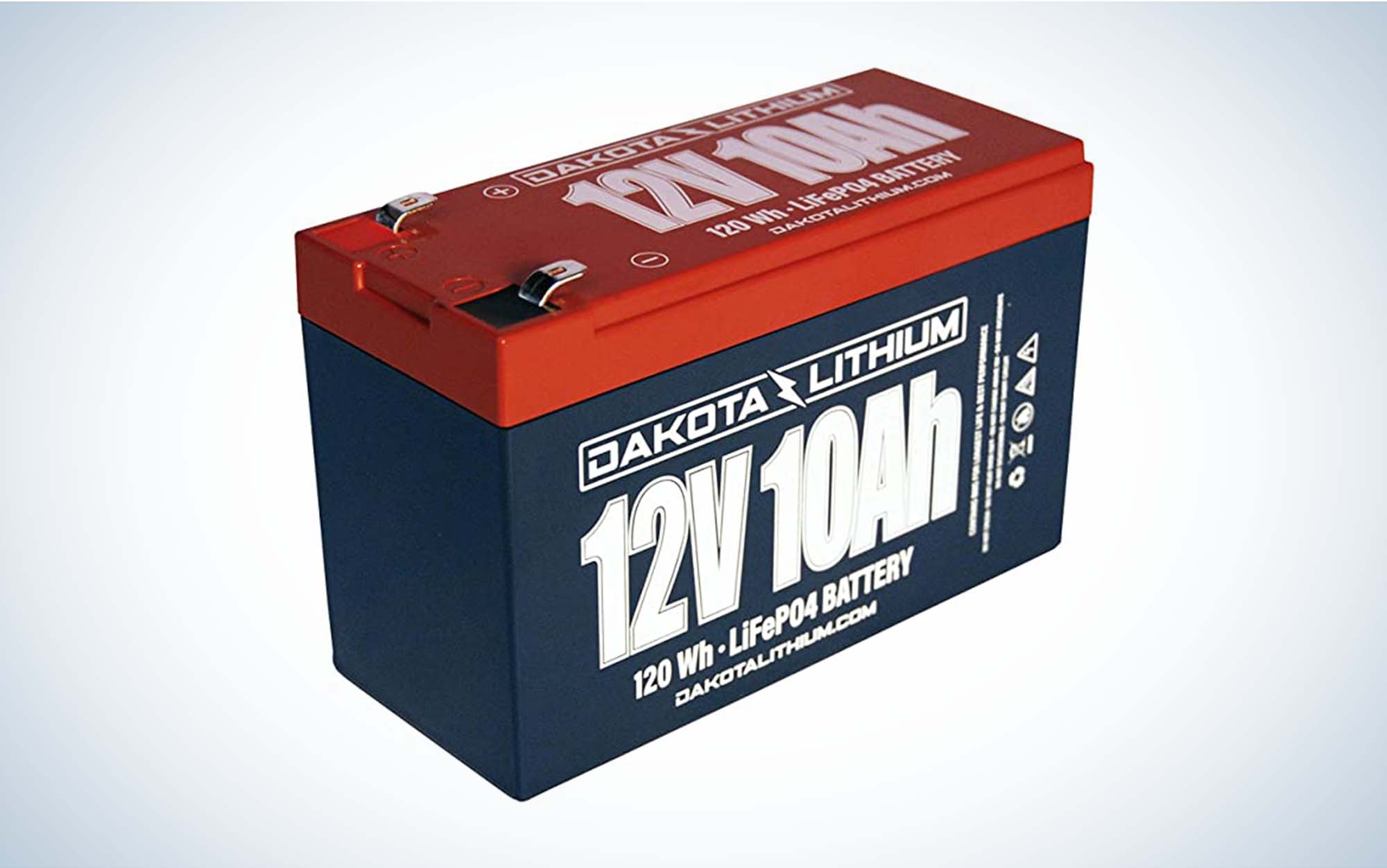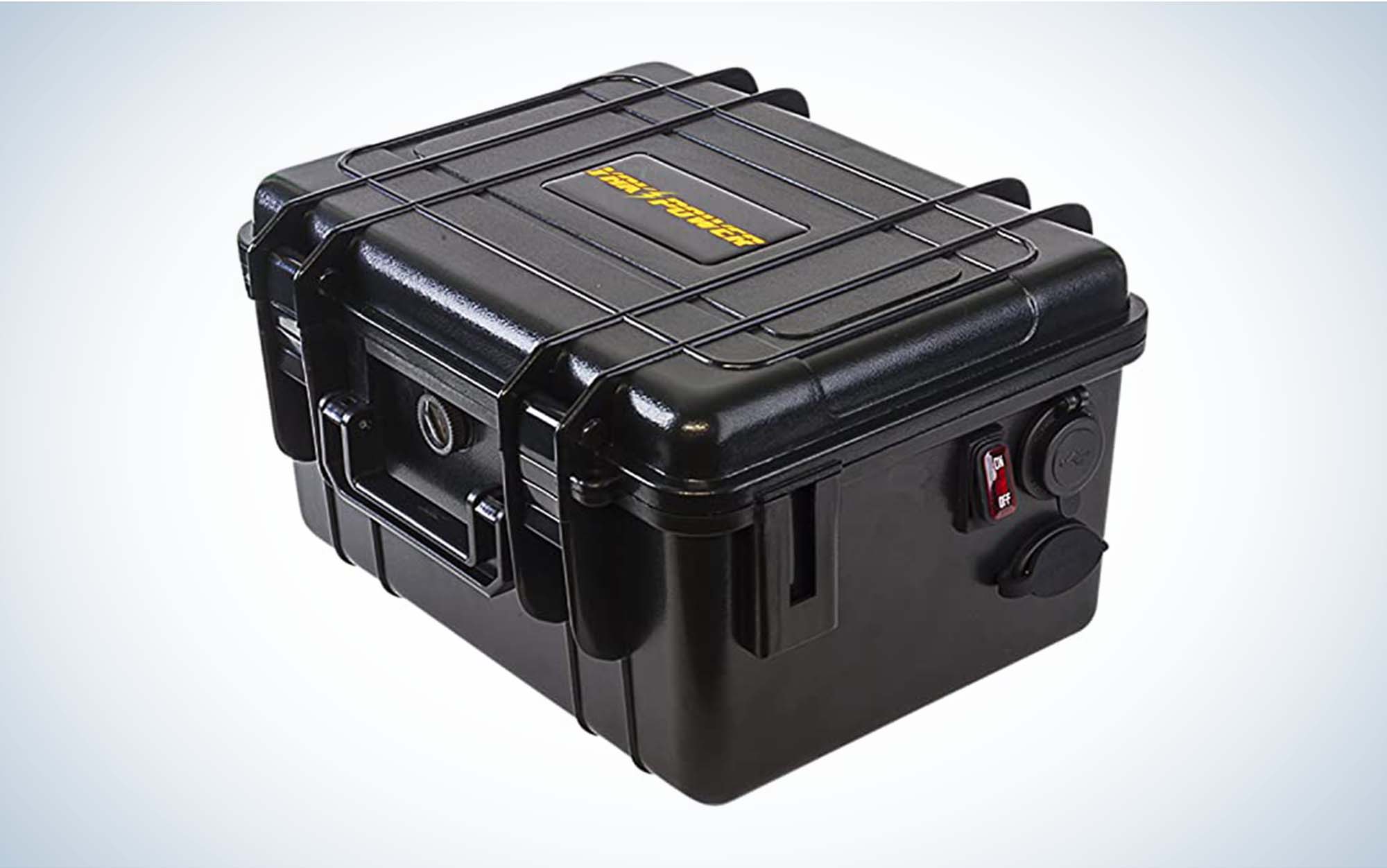The Best Kayak Fish Finders of 2023
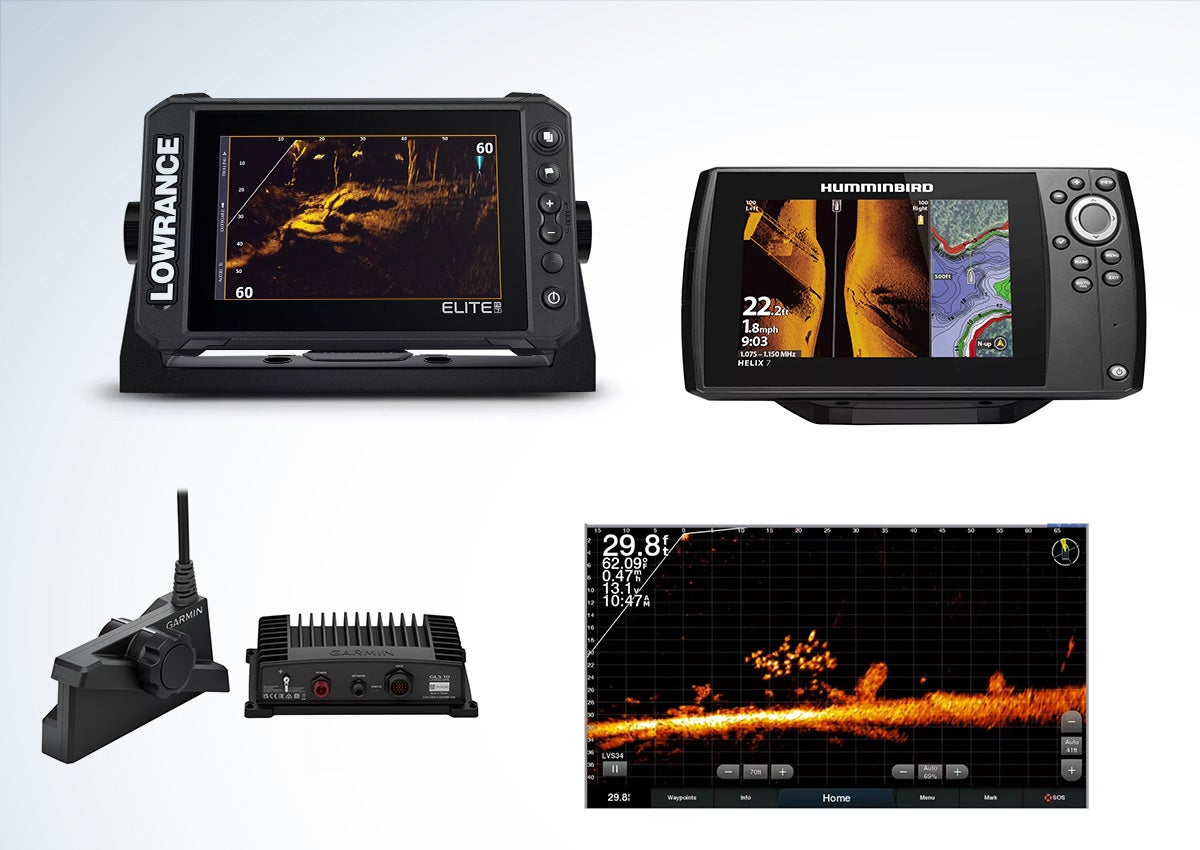
We may earn revenue from the products available on this page and participate in affiliate programs. Learn More ›
Fishing kayaks have evolved by leaps and bound, and more anglers are outfitting them with kayak fish finders. That’s because, like kayaks, electronics are better than ever, and they add a lot of capability to a kayak. If you want to upgrade your yak, here are the best kayak fish finders.
- Best Overall: Lowrance Elite FS 7
- Best Budget: Helix 5 Sonar G2
- Best for Saltwater: Humminbird Helix 7 CHIRP SI GPS G4
- Best for Tournament Angling: Garmin LiveScope Plus
- Best Battery: Dakota Lithium 12V 10Ah
- Best Battery Box: Yak-Power Power Pack
Best Kayak Fish Finders: Reviews & Recommendations
Best Overall: Lowrance Elite FS 7
Lowrance
Key Features
- Transducer Options: ActiveTarget Live Sonar, Active Imaging 3 in 1, HDI Transducer, All Season Pack
- Mapping: High resolution, bathymetric 1-foot contours on more than 15,000 lakes in the U.S.A. and more than 9,400 lakes in Canada
- Touchscreen
- Integrated wireless, NMEA 2000, and Ethernet connectivity
- Full touchscreen control of Power-Pole anchors and Ghost Trolling Motor
Pros
- Easy mounting to Hobie Kayaks
- Compatible with Live Sonar transducers
- Nice touchscreen
Cons
- Transfer waypoints via Ethernet only
I don’t always use a fish finder while kayak fishing, especially when I’m fishing shallow water, but the times I do need one, they’re absolutely critical to my success. I’ve been using my Elite FS 7 for summer crappie fishing, which is difficult because the fish move constantly, chasing schools of baitfish. So the hard part is finding them and staying with the school. I have the 3-in-1 Transducer and primarily use the down scan for summer crappie. I’ll peddle my Old Town Sportsman Big Water PDL around likely areas like submerged brush piles until I find a school. Then I’ll drop my jig down until it hangs in their face.
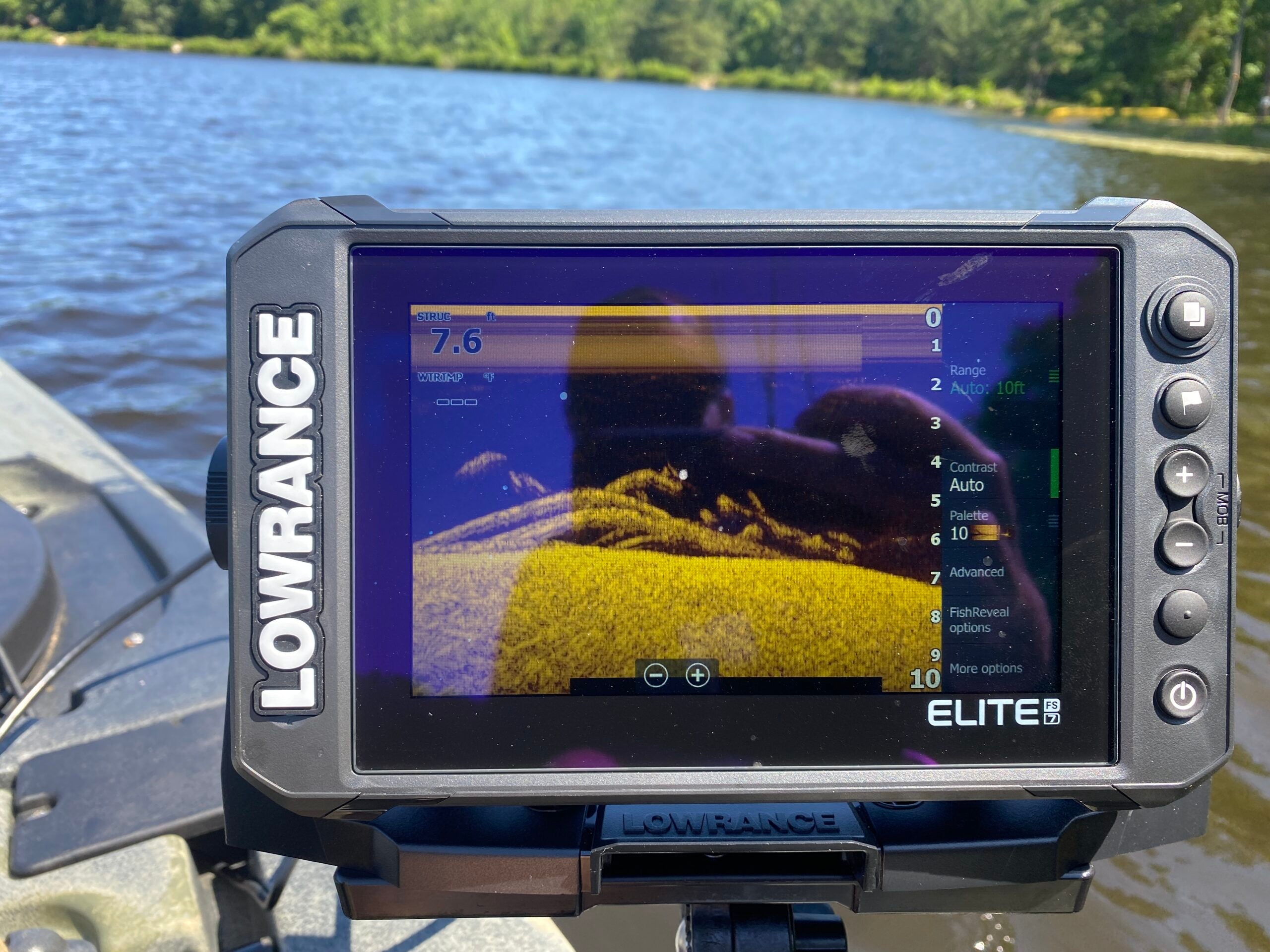
Schools of crappie and the cover they hang around to show up plain as day on the screen. I’m no video game fisherman, but I have no trouble finding fish with the down scan.
I also use my electronics heavily while fishing for saltwater species like striped bass, flounder, sea bass, and sheepshead that hang around structure. I’m not necessarily marking fish while targeting those species, instead, I’m using electronics to find slight changes in depth and key pieces of structure. When I’m cruising around, I like to use the side-scan feature to cover the most area, and then I’ll switch to down scan once I see something I like. I recommend taking advantage of trying different color palates for the side scan until you find one that you like best. I personally like the yellow and black contrast.
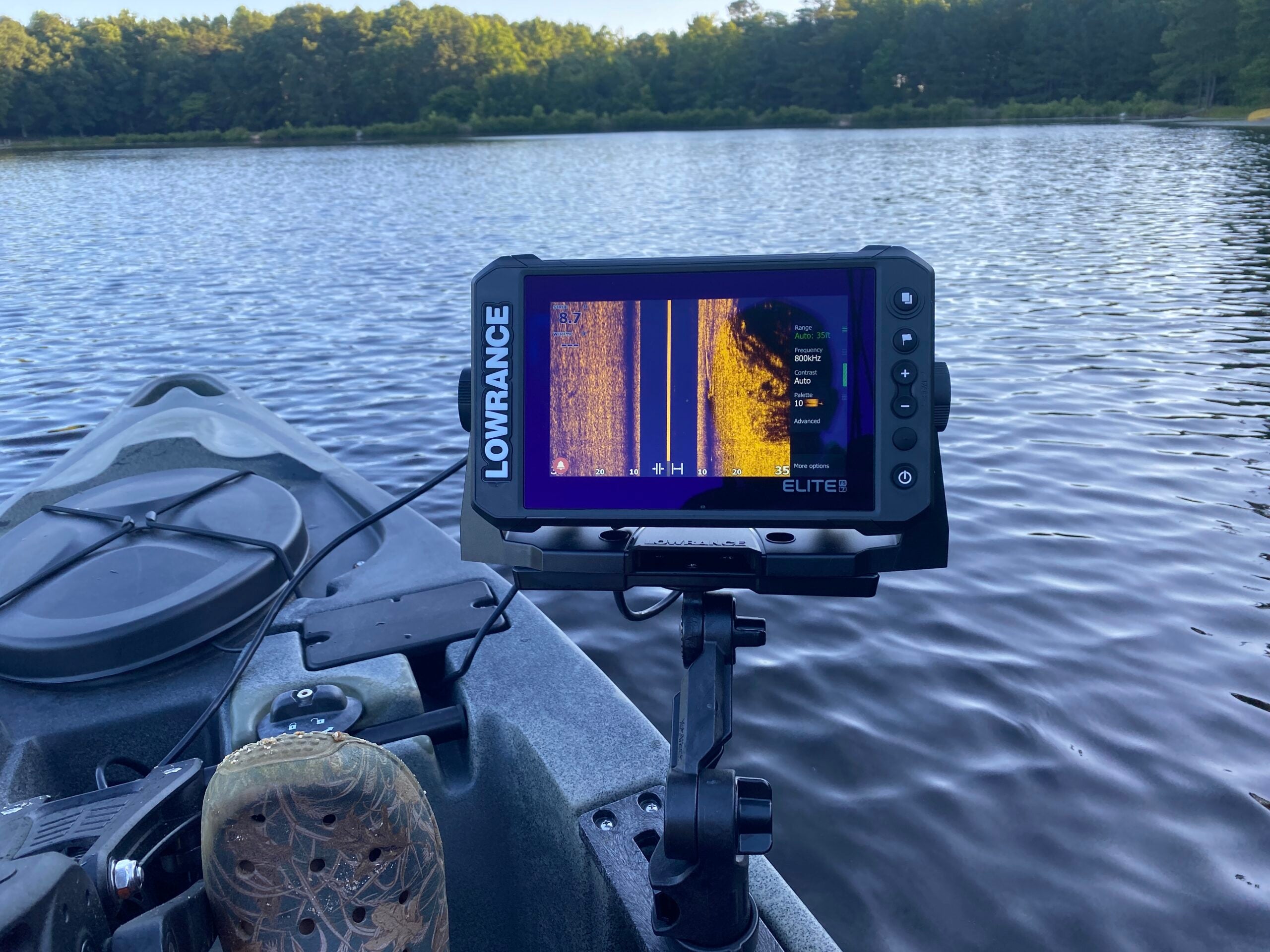
I used the YakAttack Rectangular Fish Finder Mount to attach the Elite FS 7 to the forward gear tracks on my kayak. The transducer mounting took some minor modifications because my Old Town is most compatible with Humminbirds. But, it was nothing that a little time with a power drill and a quick trip to the hardware store for stainless bolts couldn’t fix. Running the transducer cable was easy in my yak, and wiring the power source was also easy.
The mapping on the Lowrance is excellent, and the touchscreen makes it easy to scroll around the map to find ledges, drop-offs, or map your route. If you’re scouting an area at home, you can view your fish finder’s map on an iPad by connecting it via WiFi.
Best Budget: Humminbird Helix 5 Sonar G2
Humminbird
Key Features
- Keypad Control
- Transducer: DualBeam PLUS
- Water temp sensor
Pros
- Great price
- Low power draw
- Easy mounting on Old Town and Ocean Kayaks
Cons
- No memory card slot
- No mapping
The Helix 5 Sonar G2 was the first kayak fish finder I bought, and I still use it on my Jackson Mayfly. If you have an Old Town or Ocean Kayak, mounting the transducer is easy, and the cable will pass right through the scupper. On a kayak like the Mayfly, you can DIY a mount or use the YakAttack SwitchBlade transducer arm.
The 5-inch screen is large enough to clearly see bottom contour and structure detail, but small enough that it is out of the way. You’ll navigate the menus and adjust settings using the keypad, which isn’t as fast as a touchscreen, but it’s less likely to fail on you.
The imaging is pretty basic, but you have to adjust your expectations when going to a budget fish finder. I use this unit just to know how deep the water is, find hard pieces of structure like rocks, and find drop-offs. I don’t rely on it for detecting anything subtle or reliably marking bait. But, for a lot of fishing, those basic functions are all I need.
Read Next: How to Read a Fish Finder
Best for Saltwater: Humminbird Helix 7 CHIRP SI GPS G4
Humminbird
Key Features
- Down Imaging and Side Imaging
- 7-inch display
- Keypad Control
- Mapping: Humminbird Basemap
Pros
- Excellent side imaging detail
- Durable
- Easy mounting on Old Town and Ocean Kayaks
Cons
- You have to buy premium maps separately
Ric Burnley fishes for a variety of saltwater species in the waters near Virginia Beach. “I went a lot of years without a fish finder just because they were too much of a pain in the neck,” he said. “But fish finders have come a long way.” Burnley now rarely fishes without his Helix 7 mounted on his Ocean Kayak Trident 13. “I love the side-scan for speckled trout fishing,” he said. “You can see schools of speckled trout, find grass beds, and structure. It’s also almost essential for our spring big red drum fishing.”
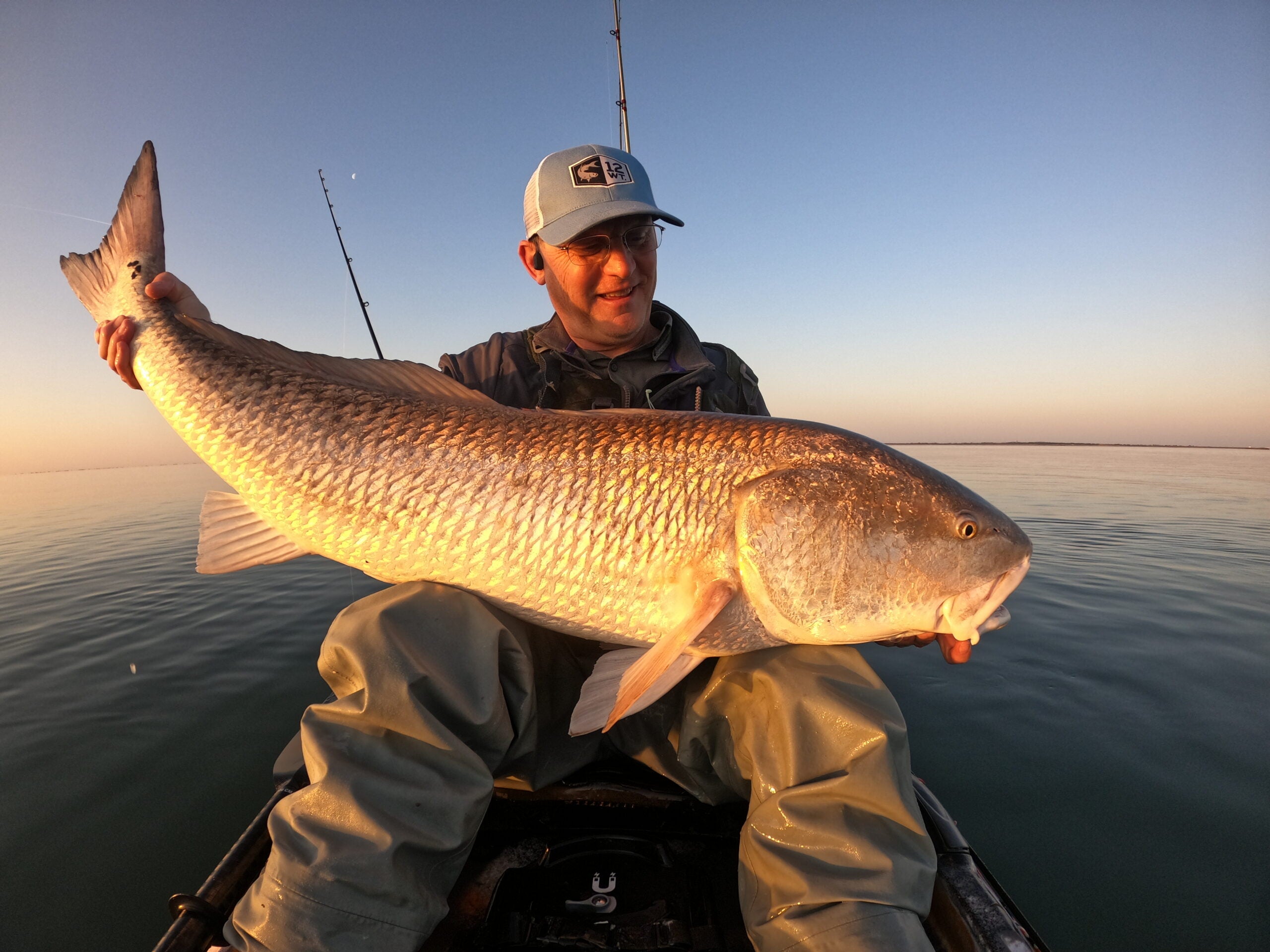
To use his Helix 7 to find big drum, Burnley will paddle around looking for schools of bull reds on the side imaging. The side imaging shows what’s happening 125 feet on either side of the boat, and it allows anglers to quickly cover water. “You need to become an expert on reading the side scan and what different marks represent. But when those drum show up on there, it’s very obvious,” he said. Burnley owns other fish finders with side scan, but he thinks the Humminbird’s contrast and detail is the best.
The Helix 7 doesn’t come with detailed charts, but they are good enough for navigation. You can upgrade the maps if you need detailed charts though. One feature Burnley often uses while searching for drum is the bread crumb feature so he can see where he’s covered and can backtrack to where he last saw fish. Burnley also noted that after several seasons of hard use his Helix 7 is still trouble-free.
Best for Tournament Angling: Garmin LiveScope Plus
Garmin
Key Features
- Live Sonar
- Perspective mode
- Compatible with many Garmin fish finder units
Pros
- Clear images, with few artifacts
- Tech that will help you win tournaments
Cons
- Not the easiest to rig
- Expensive
If you want to build a tournament-ready fishing kayak, then you’ll be looking at premium accessories like a Torqeedo motor and LiveScope. Both will help you catch fish more efficiently and step foot on the podium. But, that advantage doesn’t come cheap or without some specialized rigging. Typically, a LiveScope transducer mounts on a boat’s trolling motor, and you can pan the sonar by turning the trolling motor. On a kayak, that’s not easily done. Most anglers using LiveScope or other live sonar will mount the transducer on a rotating arm. In addition to that specialized mount, you might also want to consider having two screens on your kayak—one for LiveScope and one for mapping and side/down imaging. The added electronics, of course, means more power and smarter cable management. But, if you’re willing to put in the time and effort to rig your kayak properly, you’ll have a fish-catching machine.
Read the full Garmin Echomap and LiveScope review to learn more.
Best Battery: Dakota Lithium 12V 10Ah
Dakota Lithium
Key Features
- 11-year warranty
- 2,000+ cycles
- Weight: 2 pounds 12 ounces
- Rechargeable
- Enough power for a full day of fish finder use
Pros
- Long battery life
- Lightweight
Cons
- Expensive
The best fishing kayaks are already heavy, so adding a battery will only add to that weight. To keep your kayak as light as possible, you can use a lithium battery, which is typically half the weight of cheaper lead-acid batteries. The best kayak fish finder battery I’ve used is the Dakota Lithium 12V 10Ah, which gives me plenty of power to run a fish finder all day. After I’m done fishing, I plug it into a charger, and it’s ready to go by the next morning. They are more expensive, around $100, but they’re good for 2,000 cycles and carry an 11-year warranty. For efficiency, longevity, and weight, I haven’t found anything that beats the Dakota Lithium batteries.
Best Battery Box: Yak-Power Power Pack
Yak-Power
Key Features
- Integrated battery charger
- USB charging ports
- On/Off Switch
- Uses SAE connection to power fish finder
- Waterproof
- Holds three 7Ah or two 12Ah batteries
Pros
- Very little to no wiring required
- Charges accessories and powers your fish finder
Cons
- Bulky
I’m not the handiest person, so when it comes time to rig power, I hit the easy button and buy a Yak-Power Power Pack. You put your battery of choice into the box, attach the cables, and you’re ready to plug in your fish finder. At least that’s how it’s supposed to go, but of course, I needed to do some minor wiring to make it compatible with my battery and fish finder. First, I changed out the battery clips that came installed in the battery box because they were too small for my Dakota Lithium battery. Then I spliced a SAE connector to my fish finder’s power cable. With those two easy modifications out of the way, the battery box was ready to use, and it fits nicely in the front hatch of my Old Town Bigwater PDL. Those two modifications take minutes and is way easier than trying to rig up a battery box with an on/off switch, USB plugs, and power plug.
How to Choose a Kayak Fish Finder
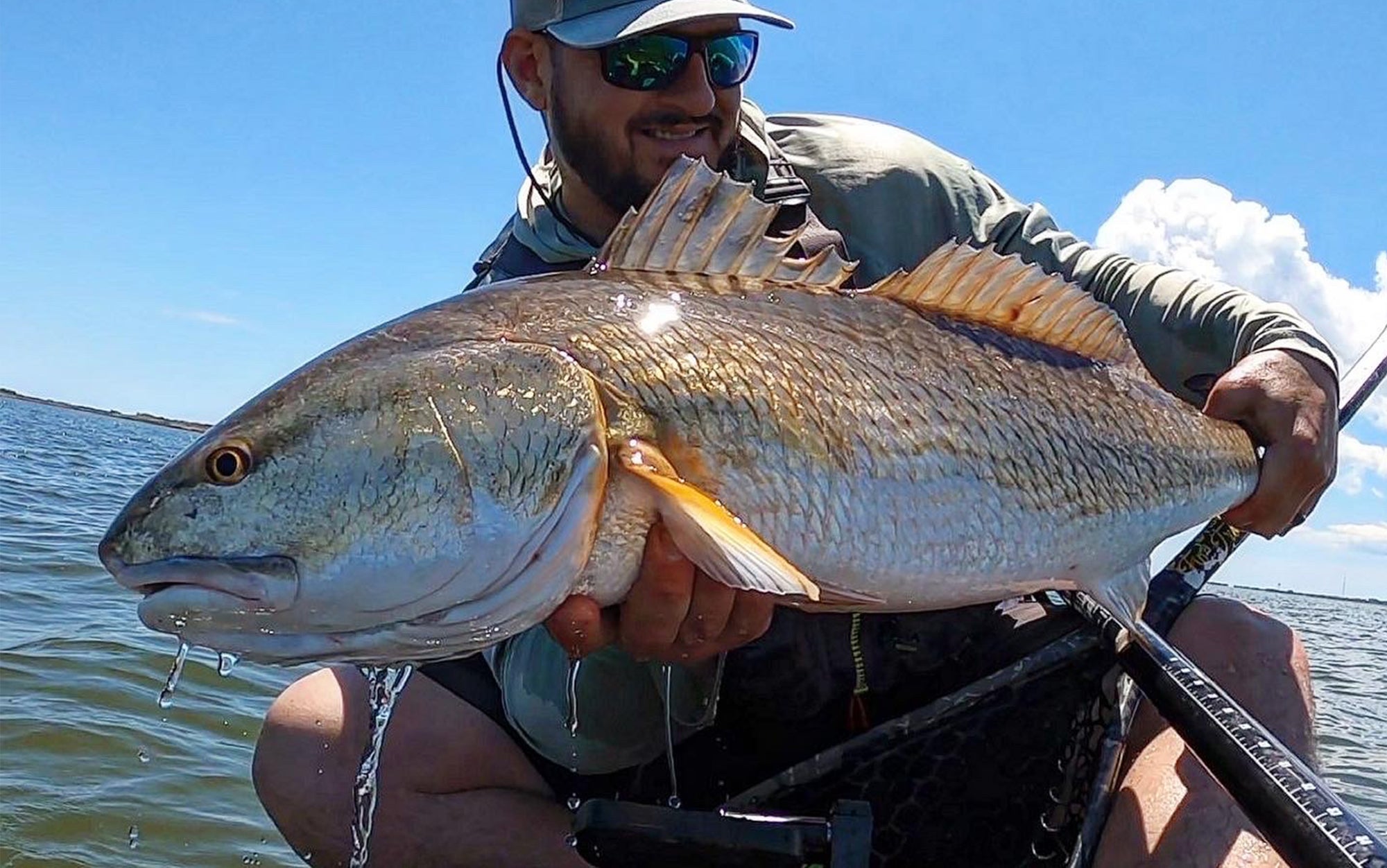
You can spend a few hundred or a few thousand dollars on a fish finder. The model you choose will depend on your style of fishing. If you enjoy a technique like deep-water jigging for lake trout, a fish finder is a critical piece of gear and you’ll want to invest in a quality unit. But, if you spend most of your time fishing saltwater flats, a fish finder is less important and you can get by with a less expensive model. Aside from price range, you’ll also want to decide between different transducers, screen sizes, and also consider how easily the electronics will mount to your kayak.
Transducer
There are three basic types of transducer you can choose from: down imaging, side imaging, and live sonar. Down imaging is the most basic type of transducer and is best for deep water fishing or anglers on a budget A side scan transducer is the most versatile because it will allow you to look at the water below you and the water on either side of you. The side-scan feature is excellent for quickly covering water and most units will cover 100 feet on either side of your kayak. Live sonar is the new craze in fish finders, and many of the best fish finders are now available with some type of live sonar transducer. Live sonar is highly effective, but it does create added challenges for mounting in a kayak and will require an adaptor.
Size
I think a 7-inch or 5-inch display is perfect for a kayak. They’re large enough to see details, but compact enough that they don’t get in the way.
Mounting
Kayak companies have smartly partnered with fish finder companies to make mounting a transducer and fish finder much easier. You might decide to choose a particular manufacturer because their units are most compatible with your kayak. For example, Humminbird fish finders easily mount to Old Town and Ocean Kayaks. Lowrance units mount seamlessly with Hobie kayaks. But, you can mount any of the best kayak fish finders on any fishing kayak with some minor modifications or by using one of the aftermarket traducer arms.
FAQs
Q: How do you power a fish finder on a kayak?`
Fish finders are powered by 12-volt batteries. The most common sizes are 12V 7Ah and 12V 12Ah.
Q: Will any fish finder work on a kayak?
Any fish finder will work on a kayak, but some mount easier without drilling or modifications. For example, a Lowrance fish finder mounts easily to Hobie kayaks.
Q: How long will a battery run on a fish finder?
A general rule of thumb is that you can expect one hour of use per amp hour. So a 12V 7Ah will run a fish finder for about 7 hours.
Final Thoughts
For certain types of fishing, a fish finder improves success drastically, and it’s a handy tool for most types of fishing. So, embrace modern technology by choosing the best kayak fish finder for you.
- Best Overall: Lowrance Elite FS 7
- Best Budget: Helix 5 Sonar G2
- Best for Saltwater: Humminbird Helix 7 CHIRP SI GPS G4
- Best for Tournament Angling: Garmin LiveScope Plus
- Best Battery: Dakota Lithium 12V 10Ah
- Best Battery Box: Yak-Power Power Pack
The post The Best Kayak Fish Finders of 2023 appeared first on Outdoor Life.
Articles may contain affiliate links which enable us to share in the revenue of any purchases made.
Source: https://www.outdoorlife.com/gear/best-kayak-fish-finders/
